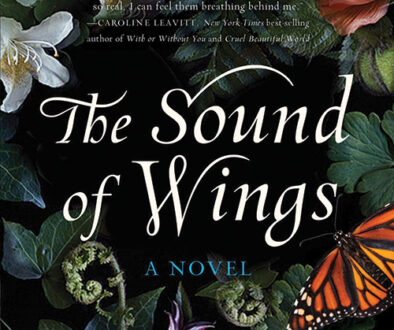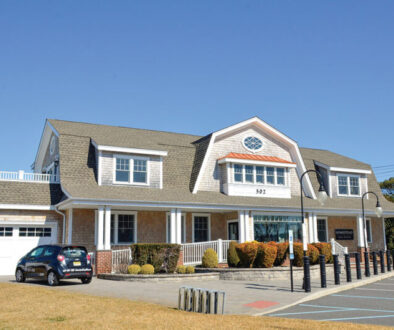Cape May’s birding history
As I have got older in life, I have begun to realize just what an impact our history has on shaping how we act and think, even today in this era of information. Although America is a young country, it has quite a rich history in regard to birds. When I first arrived in 1985, I was shocked at how few of the locals realized that Cape May is recognized internationally as a Mecca for birds. It was not until the late 90s that this started to change, with Cape May Magazine playing a big part in this.
The birding history of Cape May can be traced back to 1633. David Peter DeVries, a Dutch bloke, left Lewes, Delaware because of a Native American uprising and came to Cape May. He recorded “hundreds of thousands of pigeons.” These were presumably the Passenger Pigeon. By 1914, the Passenger Pigeon had been hunted to extinction.

A Scot, Alexander Wilson, first came to Cape May in the early 1800s. Today, many birds are named after him; the warbler, storm-petrel, snipe, and plover. The type-specimen of Wilson’s Plover was shot by him between Cape May and the Point in 1813. There are no more specific directions, and Cape May and the now gone South Cape May, stretched between half and a mile further out into the sea in those days. With far fewer houses and more animals, there were far more places for birds to go.
In 1809 George Ord shot a small warbler in Cape May County and presented it to Wilson. As is often the case, the species is often named after where the type-specimen was discovered, and so it was named the Cape May Warbler by Wilson.
Wilson lived in Philly and was good pals with brothers Titian and Ruben Peale, sons of Charles Wilson Peale, founder of America’s first Natural History museum. Titian was the artist naturalist on the 1838-42 U.S. exploratory expedition—the first worldwide exploration by America. Titian was a regular in Cape May.
In 1829 John James Audubon went to Beasley’s Point. He shot birds such as Osprey, Clapper Rail, Laughing Gull and Black-necked Stilt that were later used in his now famous work.
Spencer and William Baird, around 1843, also visited Cape May. Birds such as Baird’s Sparrow and Sandpiper were named after them. They wrote, “gunners so numerous all birds drive off except the two common species of terns [most likely Common and Least Terns].” They noted that Wilson’s plover had stopped breeding, and Piping was now rare—such was the effect of all the shooting of birds. One hunter from Long Island had collected 1200 shorebirds and eggs for food in a weekend. The massive numbers of birds and all the discoveries that could be made must have made Cape May incredible for birding at the time. Against this must have been the noise of guns going off and birds falling out of the sky everywhere.

By 1883, the collection of plumes to be used in the millinery trade had had a massive effect on heron and egret numbers and Black-winged Stilt and American Avocets had disappeared. By 1888 all the herons were gone. Tales of knee-high piles of dead birds were not that uncommon. The National Audubon Society was founded in 1886 by George Bird Grinnell, in part to protect the overhunting of herons and egrets for their plumes and to take other conservation measures to protect wildlife and habitats through changing laws.
The first Christmas Bird count was proposed by Frank Chapman in 1900 to count, rather than hunt, birds. The first official count was conducted here in 1903. Dr Whitmer Stone listed 318 species in 1937, including the now extinct Passenger Pigeon, Labrador Duck, and Heath hen. This was published in Bird Studies at Old Cape May—yes, Cape May is special that it had its own book even back then.
Hunting birds of prey had been popular. Lines of men would line the end of Sunset Boulevard and blast away unceremoniously. In 1885, the state was paying hunters to kill hawks: 50 cents till 1885, reduced to 25 cents till 1903. Such was the bad name hawks had. The killing for sport and food went on. In 1920 Whitmer Stone counted 1400 hawks killed in one day at the end of Sunset Boulevard. By 1935 only 1080: such was the destruction of the hawk population. In 1940 the Bald Eagle Act was introduced to slow down the destruction of raptor populations and in the 1950’s the New Jersey state legislature made shooting hawks illegal.
In 1946 The Cape May Geographic Society was formed to “serve as a link between the vacationing public, and the many naturalists and other students who are interested in Cape May.” As early as 1969, Tom Enis and Ian Sinclair, well known British birders, came to Cape May because of its famous migrations, staying at the Ernie Choate house at the Point.
Cape May’s history and reputation were so well known that in 1985, a 21-year-old Englishman would come here to study the incredible migrations. Like so many others, he was so smitten by the place that he decided that there was only one place to live in the world. I always tell people I don’t live in America, I live in Cape May. It is unique, and yes, it deserves its independence—passport booths by the canal could be easily done!



